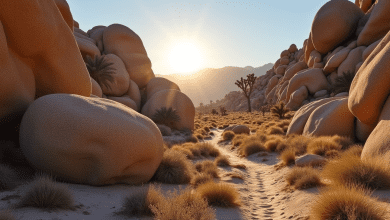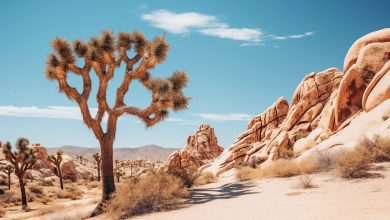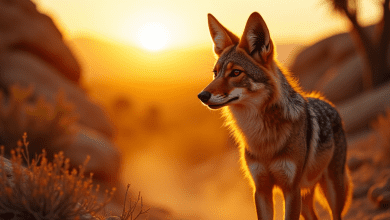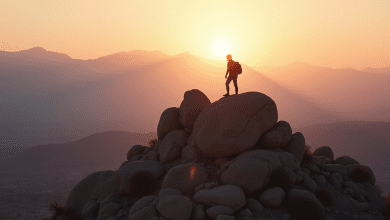Ultimate Guide to Wildlife Photography in Joshua Tree National Park: Tips and Techniques for Stunning Nature Shots

Wildlife Photography Guide at Joshua Tree National Park
Joshua Tree National Park, known for its otherworldly landscapes and unique flora and fauna, is a top destination for wildlife photographers looking to capture stunning images of desert life. This guide will walk you through the best practices for wildlife photography in this beautiful park, along with tips on equipment, techniques, and ethical considerations.
Understanding the Wildlife of Joshua Tree National Park
Joshua Tree National Park is home to an array of wildlife, including mammals, birds, reptiles, and amphibians. With its diverse habitats, from towering Joshua Trees to rocky outcrops and sprawling desert plains, the park offers ample opportunities for photographers to observe and capture various species in their natural settings.
Common Wildlife Species
Some of the most commonly spotted wildlife in Joshua Tree include:
-
Desert Tortoise: This iconic desert species is often found basking in the sun. Look for them in the spring months when they are most active.
-
Bobcats: These elusive cats can be seen at dawn or dusk. Patience is key when tracking them.
-
Bighorn Sheep: Often found in the park’s mountainous areas, these majestic animals are a sight to behold.
-
Birds: The park is home to numerous bird species, including the elusive Gambel’s quail and various hawks.
Understanding the behavior and habitats of these animals will enhance your chances of capturing stunning photographs.
Best Times for Wildlife Photography in Joshua Tree
Joshua Tree offers unique photographic opportunities year-round, but certain seasons provide even better conditions for wildlife observation and photography.
Spring (March – May)
Spring is one of the best times to visit Joshua Tree for wildlife photography. The weather is mild, with wildflowers blooming and animals like desert tortoises emerging from hibernation. This season provides vibrant colors and active wildlife, creating perfect conditions for stunning photographs.
Fall (September – November)
Fall is another ideal time for wildlife photography. As the temperatures cool down, animals become active again. This is the season when bighorn sheep are often seen as they navigate the rugged terrain.
Early Morning & Late Afternoon
Regardless of the season, early mornings and late afternoons—the golden hours—are the best times for wildlife photography. The soft, warm light enhances colors and textures, and animals are generally more active during these times.
Essential Equipment for Wildlife Photography
Before heading out to Joshua Tree, ensure you have the right gear to capture the stunning wildlife effectively.
Camera and Lenses
-
DSLR or Mirrorless Camera: A high-quality camera with interchangeable lenses will give you the flexibility to capture both wide landscapes and detailed wildlife shots.
-
Telephoto Lens: A 300mm or longer lens is ideal for photographing wildlife from a distance without disturbing them.
Tripod and Stabilization
A sturdy tripod can help minimize shakes and enhance image quality, especially during low-light conditions. Consider using a gimbal tripod head for tracking moving animals.
Accessories
-
Remote Shutter Release: This is particularly useful when photographing skittish animals.
-
Extra Batteries and Memory Cards: Wildlife photography often requires patience and multiple shots, so be prepared.
Techniques for Capturing Stunning Wildlife Photographs
To make the most of your wildlife photography experience in Joshua Tree, consider these techniques:
Composition
-
Rule of Thirds: Frame your images using the rule of thirds to create more dynamic and interesting compositions.
-
Foreground and Background Elements: Incorporate natural elements to add depth to your images.
Patience and Stealth
Wildlife photography is about observing and waiting. Approach your subjects quietly and be patient. Use natural cover, such as bushes and rocks, to get closer to your subjects without startling them.
Focus on Eyes
When photographing animals, focus on their eyes. Sharp eyes draw viewers in and create an emotional connection.
Ethical Wildlife Photography
As photographers, we have a responsibility to respect wildlife and their habitats. Here are some ethical considerations to keep in mind while shooting in Joshua Tree:
-
Respect Wildlife: Always maintain a safe distance from animals. Avoid feeding or approaching them, which can disrupt their natural behaviors.
-
Stay on Designated Trails: Protect the park’s fragile ecosystems by sticking to trails and established paths.
-
Leave No Trace: Carry out all trash and minimize your impact on the environment.
By following these guidelines, you can enjoy and document the beauty of Joshua Tree’s wildlife while also preserving the park for others.
Conclusion
Joshua Tree National Park is a paradise for wildlife photographers who appreciate the complexities of the natural world. By understanding the wildlife, preparing with the right equipment, and practicing ethical photography techniques, you can create breathtaking images that truly reflect the beauty of this unique desert ecosystem. Plan your visit around the ideal times and embrace the patience required for wildlife photography, and you will undoubtedly capture unforgettable moments in Joshua Tree. Happy shooting!




